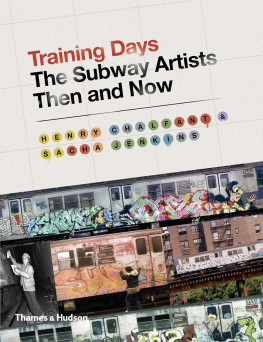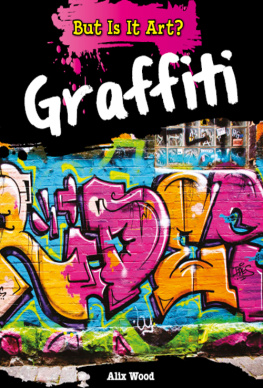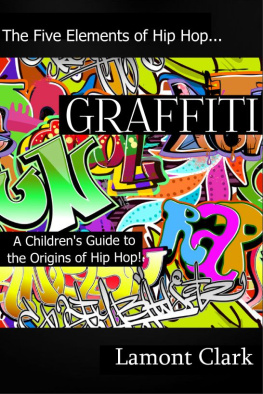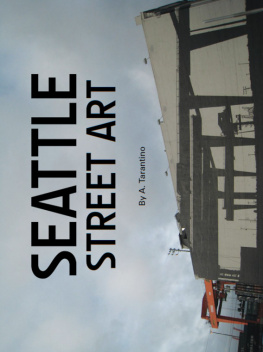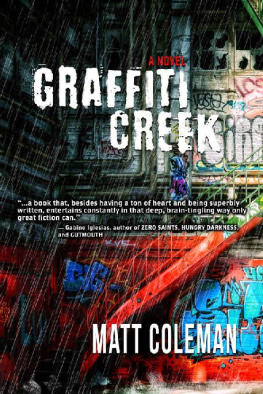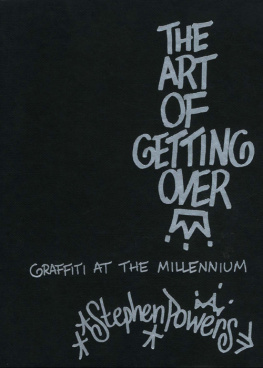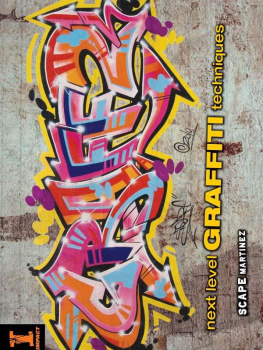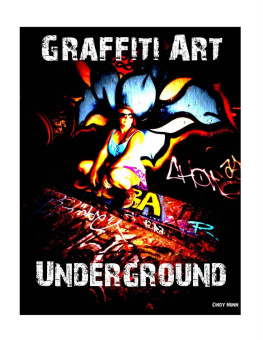
Henry Chalfants world-renowned documentation of the artists of the New York subway was memorialized in the most successful book on graffiti ever published, Subway Art (Thames & Hudson, 1984).
Sacha Jenkins is a former New York graffiti writer turned journalist whose books include the Piecebook series of graffiti drawings. He is the co-founder of the seminal hip-hop magazine ego trip, as well as co-author of the best-selling biography of Eminem, The Way I Am (2009).

Other titles of interest published by
Thames & Hudson include:
Graffiti and Street Art (World of Art series)
Graffiti School: A Student Guide
Graffiti Alphabets: Street Fonts from Around the World
Sneakers: The Complete Collectors Guide
See our websites
www.thamesandhudson.com
www.thamesandhudsonusa.com
Contents
by Henry Chalfant
by Sacha Jenkins


Henry Chalfant in front of his installation at MOCA, Los Angeles, in 2011, which featured more than 800 painted subway cars.
Henry Chalfant
My first serious photo expedition to the Bronx to hunt for trains on the elevated took place in the summer of 1977. One weekend, I took the uptown 2 train from the 96th Street and Broadway station near my home. As the train climbed out of the tunnel at 3rd Avenue and 149th Street, I saw a string of trains parked on the track. The sides were covered with throw-ups and burners. As we approached Intervale Avenue, the Fabulous 5s Merry Christmas married couple () came into view. I wanted that picture so badly! I decided to get off at the next stop and see what I could do. As the two cars were parked in between stations, I only had one option: to make my way along the catwalk that workers used for track work. Intervale Avenue takes its name from the valley in which the neighborhood was built, and the elevated track lies on a trestle high above the street. I knew that the trains ran about every ten minutes on weekends, but there were two linesthe 2s and 5susing the same track, and there was no way to tell how soon the next train might come. So, knees shaking, I walked out to where the Merry Christmas train was parked. Using a technique to create a panoramic image that I had learned as a sculptor, I took about a dozen overlapping shots of those two cars, before running back to the station and climbing onto the platform, provoking curious and somewhat disdainful looks from the waiting passengers. As I hung about at Intervale station that day, I was able to apply the same shooting technique to some additional pieces on the trains stopping on the track opposite, on the downtown side of the platform. This was the launch of my subway art collection. Over a seven-year period, I accumulated more than 800 images of subway art.
That was a landmark year for New York City. It was the year that Son of Sam, the serial killer who stalked the city for months targeting young couples, was caught. And it was the year of the blackout that triggered widespread looting and fires. According to old-school graffiti writer James Top, the blackout was the event that gave birth to hip hop. The spoils of the looting included huge quantities of spray paint and electronic equipment such as speakers, amplifiers, and turntablesenough material to expand the power and reach of the art and music that the young kids were creating. I once watched James Top in an interview with a reporter from the New York Times, in which he said of the blackout: That was the moment when we understood that we had real power.
After my first foray into the Bronx, I began to go every weekend to one of the elevated stations on the 2 and 5 lines. Sometimes I switched lines at the Grand Concourse and took the uptown 4 train, which also ran outside on an elevated line past Yankee Stadium. Another favorite spot was 125th Street and Broadway in Manhattan, where the 1 train briefly emerges into daylight before plunging back into the tunnel on its journey to 242nd Street. By 1978, the New York City Transit Authority had expanded its buffing facilities and was running all the trains through large, environmentally damaging chemical car washes. As a result, there were very few pieces running that year. However, from the elevated stations I could see the many graffiti pieces on the streets and handball courts of the Bronx. I decided to add those to my growing collection and began to wander the streets of the neighborhood with my camera. I was able to witness first-hand the devastation that was taking place there, the abandonment and fires that were ripping through the borough, creating the now famous wasteland.
One Saturday, I happened upon a curious scene in a park near East Tremont Avenue, where kids had gathered and were setting up gigantic speakers, amps, and turntables. I approached but quickly realized that I had come to the attention of a menacing Latino gang wearing colors. I dont remember the name of the gang, but they were all dressed in green. I overheard one of them say to another, Te sac una foto. Uh oh, I thought. The guy came up to me and literally lifted me up by the lapels, like a cartoon character. You took my picture, he said. No, no, this is what Im doing, I replied, showing him some pictures of graffiti I had in my pocket. He shuffled through them with interest, as his companions gathered around, and then said, Okay, Ill let you go, but if I see my picture in the paper, youre dead! Needless to say, I made a quick exit, but it is one of my lasting regrets that I didnt stay long enough to seeand photographwhat I now realize was a hip-hop park jam.

The Fabulous 5s Merry Christmas married couple, painted by Lee, Mono, and Doc, 1977. These images show Henry Chalfants technique for documenting the trains, shooting a series of photos of each car from close-up and splicing the resulting prints in the studio.
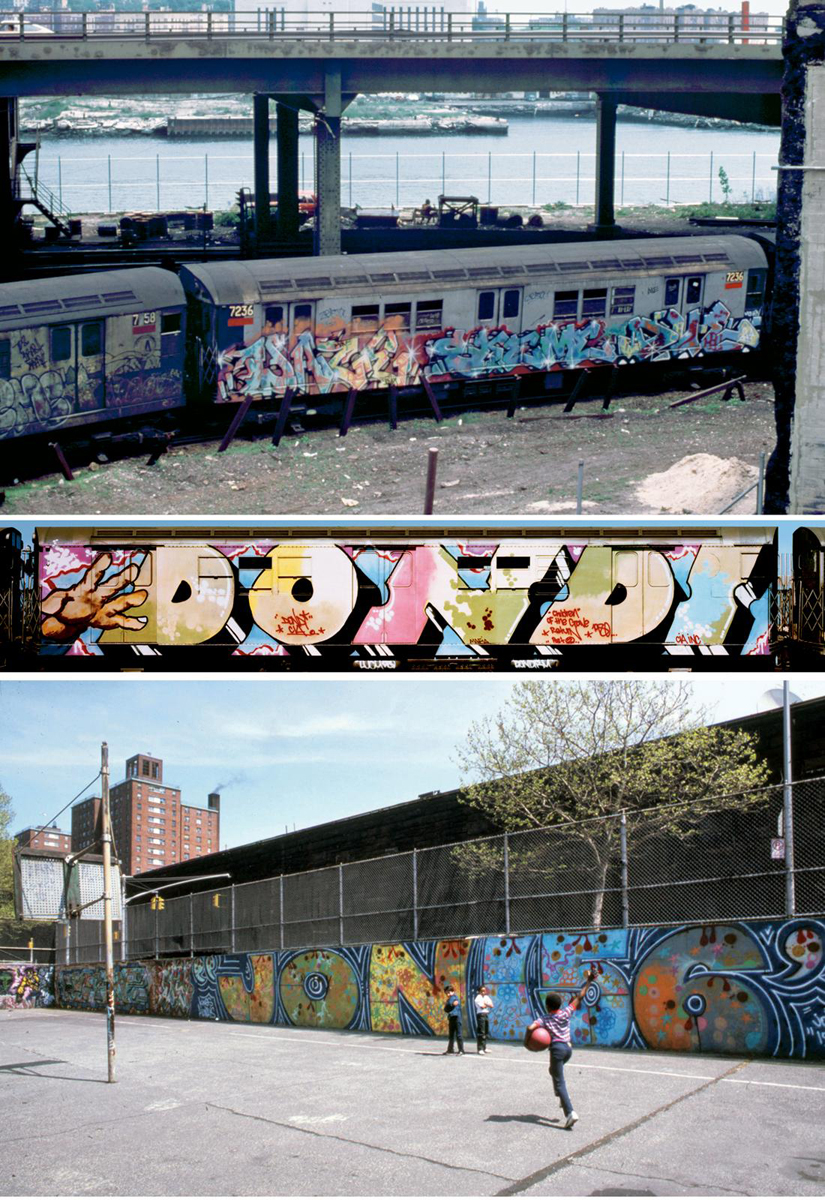
ABOVE Daze, Skeme, Due (Dez), 3 yard, Harlem, 1982. CENTER Dondis Children of the Grave, Part II, painted during the transit strike of 1980. BELOW Jon 156 (Jon One), Graffiti Hall of Fame, East 106th Street and Park Avenue, Harlem, 1984.
In April 1980, there was a transit strike. Graffiti writers seized the opportunity to paint undisturbed, day and night, for almost two weeks. Dondi painted his famous Children of the Grave, Part II during the strike, making the most of being able to create his masterpiece at leisure. Other writers also took advantage of the moment and created many masterpieces and burners, making 1980 a very good year. This was one of the few times in history that writers were able to work as if they were in a studio, with plenty of time to paint carefully and make corrections. Conditions were not usually so favorable, with the dirt, darkness, and cramped space, as well as the many dangers from police raids, worker assaults, beat-downs, and paint thefts from rival crews, turning the whole process into something more akin to performance art in a war zone. These special circumstances have spawned a rich trove of stories, many of which have remained untold until now.
Next page
